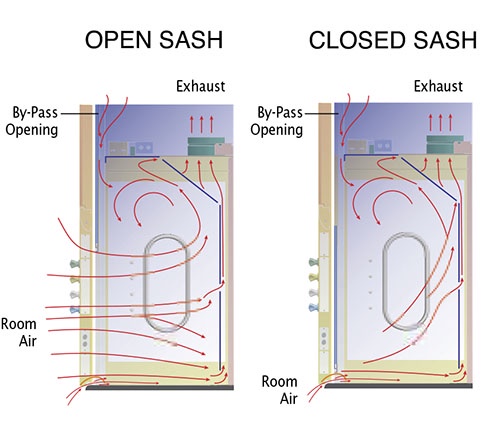Fume hoods are essential safety equipment in laboratories that protect personnel from inhaling harmful fumes and gases. They are used in various scientific applications, including chemical analysis, pharmaceuticals, and biotechnology. Choosing the right fume hood can be a daunting task, but this guide will help you select the most appropriate fume hood for your needs.
1.Determine the Type of Fume Hood Needed
There are several types of fume hoods, including ducted, ductless, and auxiliary. Ducted fume hoods are the most common type and vent fumes outside of the building. Ductless hoods, on the other hand, filter air and recirculate it back into the laboratory. Auxiliary fume hoods are smaller, portable units that can be used for localized fume extraction.
2.Consider the Size of the Fume Hood
The size of the fume hood you need depends on the size of the equipment you will be using inside it. The hood should be large enough to accommodate your equipment and provide enough space for you to work comfortably.
3.Check the Face Velocity
The face velocity of a fume hood is the speed of air being drawn into the hood. A high face velocity ensures that fumes and gases are effectively contained inside the hood. However, it can also cause turbulence and noise. A face velocity between 80-120 feet per minute (fpm) is usually adequate for most applications.
4.Look for Safety Features
Fume hoods should have safety features such as sashes, alarms, and monitoring systems. The sash is the transparent shield that separates the operator from the chemicals inside the hood. Alarms and monitoring systems alert users to any potential problems, such as a drop in face velocity or a malfunctioning filter.
5.Choose the Right Material
Fume hoods can be made of various materials, including metal, plastic, and glass. The material you choose should be appropriate for the chemicals you will be using inside the hood. For example, corrosive chemicals require a hood made of a non-reactive material.
6.Consider Energy Efficiency
Energy-efficient fume hoods use less energy to operate and are more environmentally friendly. Look for hoods with low-flow, variable air volume (VAV) systems, which adjust the hood's airflow based on the user's needs.
7.Check Compliance Standards
Finally, ensure that the fume hood you choose meets all applicable safety and environmental standards, such as the American National Standards Institute (ANSI) and the Occupational Safety and Health Administration (OSHA) regulations.
In conclusion, selecting the right fume hood Iraq is crucial to ensure the safety of laboratory personnel and the environment. By considering the factors outlined in this guide, you can choose the most appropriate fume hood for your laboratory's needs.


No comments yet